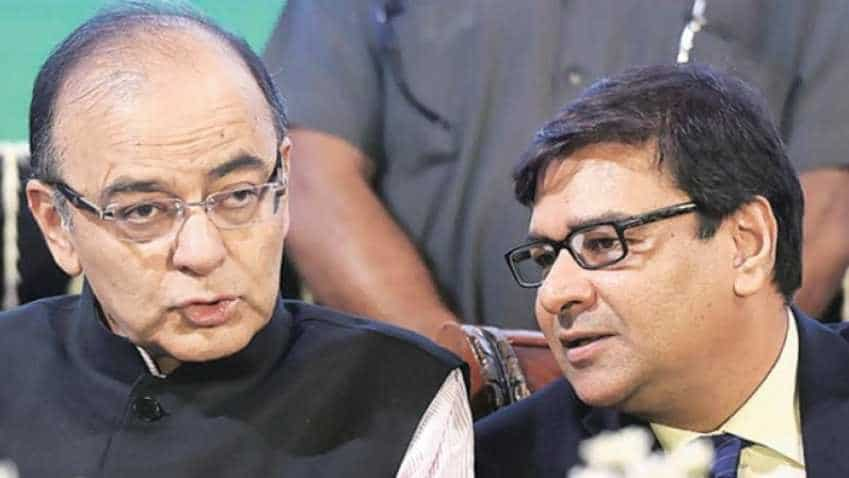Govt, RBI rift: FM assures on central bank autonomy; sources say Section 7 of RBI Act not invoked
The RBI’s Board meeting call came within hours of a statement issued by the finance ministry that many viewed as a sign of easing tensions between the two sides. The ministry clarification came amid reports of growing rift between the central government and the central bank and speculations that the RBI governor may resign following the tussle.

The government on Wednesday said that the autonomy of the central bank is essential and an accepted governance requirement as Reserve Bank of India (RBI) called for a Board meeting on November 19. The Board meeting would discuss pending issues of the meeting held last week that are believed to have created a rift between the government and the central bank.
The RBI’s Board meeting call came within hours of a statement issued by the finance ministry that many viewed as a sign of easing tensions between the two sides.
The ministry clarification came amid reports of growing rift between the central government and the central bank and speculations that the RBI governor may resign following the tussle.
“The autonomy for the central bank, within the framework of the RBI Act, is an essential and accepted governance requirement,” the finance ministry said in a statement released around noon, adding that the governments in India have nurtured and respected it.
It said that both the government and the central bank in their functioning have to be guided by the public interest and the requirements of the economy.
“For the purpose, extensive consultations on several issues take place between the government and the RBI from time to time…”
The government through these consultations places its assessment on the issues and suggests possible solutions and will continue to do so, the statement said.
Responding to a question on growing rift between the government and the central bank later in the day during a press conference, finance minister Arun Jaitley said that the government has never made public the subject matter of these consultations and that only the final decisions are communicated.
The tension between the government and the central bank escalated after deputy governor Viral Acharya last week warned the government of “potentially catastrophic” implications of undermining the RBI’s independence.
Miffed over Acharya’s public comments, Jaitley on Tuesday blamed the central bank for failing to prevent indiscriminate lending, saying that the central bank looked the other way when banks gave loans indiscriminately during 2008-2014.
The government is having major differences with RBI over the issue of liquidity in the system.
The matter also came up for discussion during the meeting of the Financial Stability and Development Council (FSDC) held in New Delhi on Tuesday.
While the Reserve Bank of India has maintained that there is adequate liquidity in the system, the government strongly feels the central bank is not taking enough measures to tackle the liquidity stress in the non-banking finance company (NBFC) sector.
“The liquidity crunch is affecting the construction sector, flat buyers and even automobile sales are down,” a senior official said.
The interest rates issue is another point of contention between the two, with the government saying that the high-interest rates are impacting the industry and RBI maintaining that there is adequate liquidity in the system.
Upset over the problem of liquidity crunch, the government recently wrote three letters to RBI referring to the unused Section 7 of RBI Act, 1934, on relaxing the Prompt Corrective Action (PCA) norms for banks, so that more funds could be made available to the NBFCs and to ease lending to micro, small and medium enterprises (MSMEs), as well as to reclassify power sector loans.
The government, in the letters to RBI, though mentioned Section 7, actually did not invoke it, sources said as the government faced criticism for using the Section to issue instructions to the central bank.
As per Section 7 of RBI Act, the government can give directions to RBI from time to time after consultation with the governor on the issues it considers necessary in the public interest. It has, however, never been used to give directions to the central bank.
Source: DNA Money
Get Latest Business News, Stock Market Updates and Videos; Check your tax outgo through Income Tax Calculator and save money through our Personal Finance coverage. Check Business Breaking News Live on Zee Business Twitter and Facebook. Subscribe on YouTube.
RECOMMENDED STORIES

SBI 444-day FD vs PNB 400-day FD: Here's what general and senior citizens will get in maturity on Rs 3.5 lakh and 7 lakh investments in special FDs?

Rs 3,500 Monthly SIP for 35 years vs Rs 35,000 Monthly SIP for 16 Years: Which can give you higher corpus in long term? See calculations

Small SIP, Big Impact: Rs 1,111 monthly SIP for 40 years, Rs 11,111 for 20 years or Rs 22,222 for 10 years, which do you think works best?

Looking for short term investment ideas? Analysts suggest buying these 2 stocks for potential gain; check targets
07:26 AM IST










 RBI may face tougher path in February rate cut as Fed reshaped global monetary policy expectations: Report
RBI may face tougher path in February rate cut as Fed reshaped global monetary policy expectations: Report RBI raises collateral-free agricultural loan limit to Rs 2 lakh to aid farmers
RBI raises collateral-free agricultural loan limit to Rs 2 lakh to aid farmers 26th RBI Governor Takes Charge: Sanjay Malhotra sets sights on stability, growth, and trust
26th RBI Governor Takes Charge: Sanjay Malhotra sets sights on stability, growth, and trust How economists view RBI's CRR cut, status quo on rates & stance
How economists view RBI's CRR cut, status quo on rates & stance RBI adds 27 tonnes gold to country's reserve in October: WGC
RBI adds 27 tonnes gold to country's reserve in October: WGC